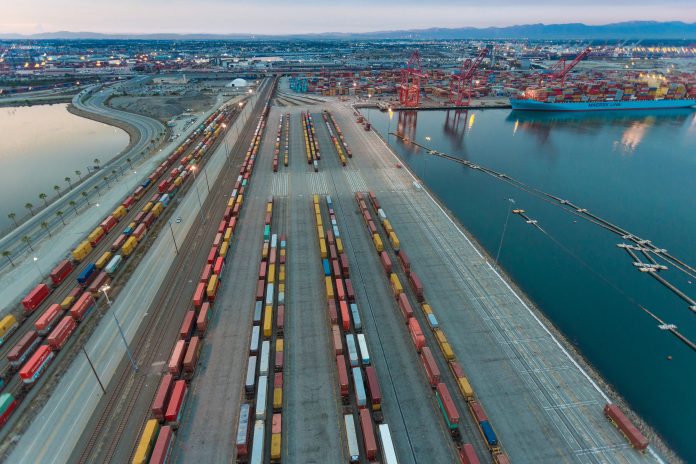The Port of Long Beach (POLB) has completed the construction of a new rail project that will increase the efficiency of goods movement and reduce congestion on local roadways by shifting more cargo to trains.
The Double Track Access from Pier G to Pier J Project adds a second rail line running approximately 2,450 metres long that enables four terminals in the port’s south basin area to simultaneously handle arriving and departing trains.
The project is part of the Californian port’s ongoing rail infrastructure capital improvement programme aimed at shifting more cargo to rail, which is one of the goals of the 2017 Update of the San Pedro Bay Ports Clean Air Action Plan.
“This project is an important piece of the rail improvement programme that will increase efficiency and lower emissions at our Port,” confirmed Long Beach mayor, Robert Garcia, who added, “We’re continuing to invest in strengthening our supply chain, prioritizing environmental sustainability and reducing impacts on the communities surrounding the Port.”
Port of Long Beach executive director, Mario Cordero commented, “This project will streamline operations and reduce truck trips at a time we are experiencing unprecedented growth in cargo. Our investments in on-dock rail will help the Port remain globally competitive and environmentally sustainable well into the future.”
Works on the project, which is expected to increase rail efficiency at Piers G and J up to 25%, started in February 2020. The project is also anticipated to minimise conflict with neighboring terminals’ on-dock rail operations and improve overall safety in the vicinity.
“Alleviating truck traffic will enhance air quality and decrease the impact of Port operations on the surrounding community,” said Sharon L. Weissman, vice president of the Long Beach Harbor Commission.
The US$34.7 million project was partially funded with a US$14 million grant from the state’s Trade Corridor Enhancement Program, which was established by Senate Bill 1 to pay for infrastructure improvements on federally designated freight networks across California using money from the state and the National Highway Freight Program.
POLB contributed the remaining funds for the project, which was completed early and under budget.







